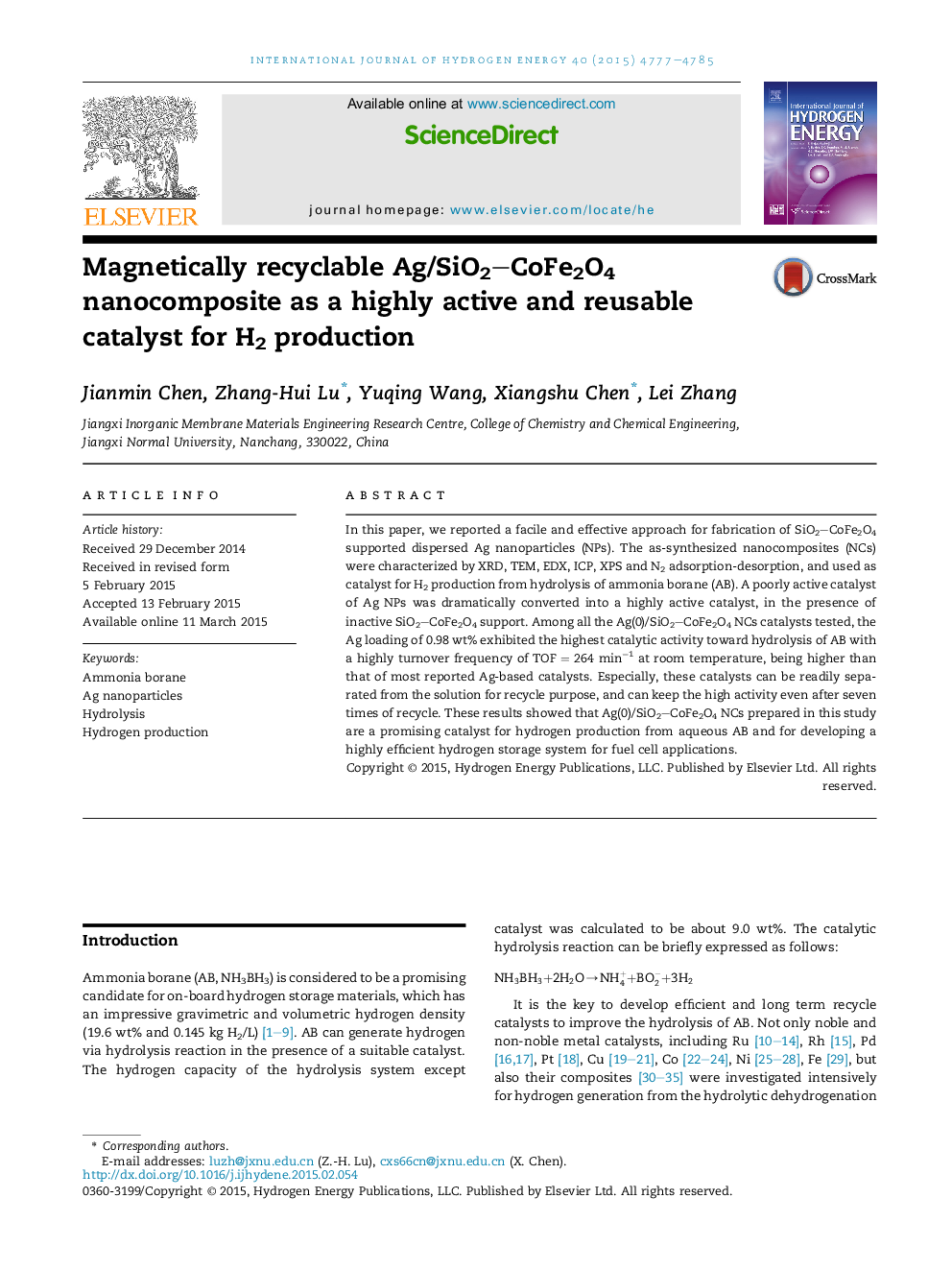| Article ID | Journal | Published Year | Pages | File Type |
|---|---|---|---|---|
| 1271587 | International Journal of Hydrogen Energy | 2015 | 9 Pages |
•Ag/SiO2–CoFe2O4 NCs are in situ synthesized and used as catalyst for hydrolysis of AB.•Ag/SiO2–CoFe2O4 exhibit superior catalytic activity than single Ag or SiO2–CoFe2O4.•The measured TOF value 264 mol H2 (mol Ag min)−1 is among the highest of all the reported Ag-based catalysts.•These catalysts can be readily separated by an external magnet and show good recycle stability.
In this paper, we reported a facile and effective approach for fabrication of SiO2–CoFe2O4 supported dispersed Ag nanoparticles (NPs). The as-synthesized nanocomposites (NCs) were characterized by XRD, TEM, EDX, ICP, XPS and N2 adsorption-desorption, and used as catalyst for H2 production from hydrolysis of ammonia borane (AB). A poorly active catalyst of Ag NPs was dramatically converted into a highly active catalyst, in the presence of inactive SiO2–CoFe2O4 support. Among all the Ag(0)/SiO2–CoFe2O4 NCs catalysts tested, the Ag loading of 0.98 wt% exhibited the highest catalytic activity toward hydrolysis of AB with a highly turnover frequency of TOF = 264 min−1 at room temperature, being higher than that of most reported Ag-based catalysts. Especially, these catalysts can be readily separated from the solution for recycle purpose, and can keep the high activity even after seven times of recycle. These results showed that Ag(0)/SiO2–CoFe2O4 NCs prepared in this study are a promising catalyst for hydrogen production from aqueous AB and for developing a highly efficient hydrogen storage system for fuel cell applications.
Graphical abstractA facile and effective approach has been applied for in situ fabrication of SiO2–CoFe2O4 supported well dispersed Ag nanoparticles, which exhibited the excellent catalytic activity for hydrogen generation from the hydrolysis of AB at room temperature.Figure optionsDownload full-size imageDownload as PowerPoint slide
